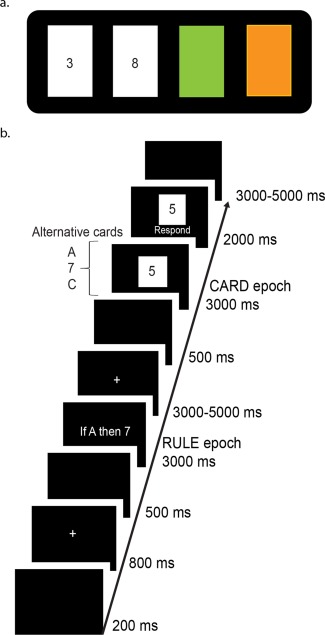Figure 1.

Schematic of the WST and modified version used in the current study. a. In the classic WST participants are shown four cards (in this example, “3,” “8,” green and orange) and are provided with a conditional rule such as If a card shows an even number on one face, then its opposite face will be green. Participants are then asked which card(s) must be turned over to test the conditional rule provided. The only cards that can disconfirm the rule are the orange (reverse side even) and 8 (reverse side orange) cards. If the 3 card is orange on its opposite face it does not invalidate the rule (the rule does not say anything about odd cards). Likewise, if the reverse of the green card is an odd number the rule cannot be disconfirmed. b. Trial structure of the modified WST used in the functional magnetic resonance imaging (fMRI) study. Participants were presented with a rule (e.g., “If A then 7”), followed by a single “card,” and were then asked to judge if the presented card could disconfirm the rule. By presenting cards serially the level of relational complexity needed to disconfirm the rule is manipulated on a trial‐by‐trial basis. [Color figure can be viewed in the online issue, which is available at http://wileyonlinelibrary.com.]
